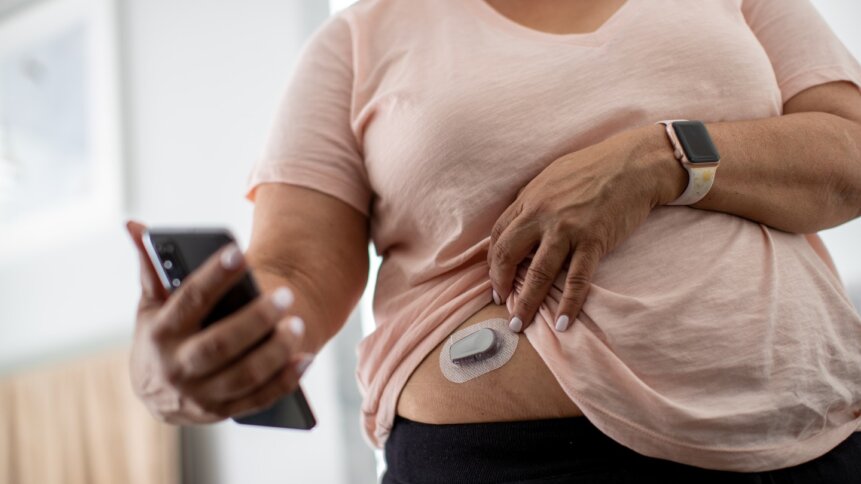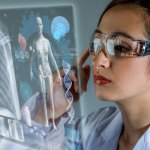Medtech delivering better patient journeys

Patients with immediate or long-term surgical needs have what can be considered a straightforward – and comparatively short – patient journeys. From examination, through diagnosis, to treatment, to aftercare, to getting right on with the rest of their lives. They’re rarely fun, and in countries like the US without socialized healthcare, they can be economically crippling, but as patient journeys go, they are at least relatively simple, with a beginning, a middle, and an end.
Chronic diseases are serious
Chronic diseases though are a whole other story. Chronic or non-communicable diseases (NCDs) are ongoing conditions that involve a significantly longer, and necessarily more complicated patient journey. And NCDs claim over 40 million lives a year, besides regularly clobbering American households with inescapable debt-shackles as the journey of long-term treatment is almost destined to become a journey of long-term care. But NCDs are a worldwide problem, not just an American one.
Worldwide problems suggest the necessity of worldwide solutions.
The existence of medtech practically demands that it should be able to help deliver better patient journeys for those with NCDs (and their families). But how can medtech help smooth out the road ahead?
To know the full answer to that, it’s important to understand the areas in which the patient journeys of people with NCDs are currently interrupted or overcomplicated.
Data and the streamlined journey
First of all, there are issues in terms of data monitoring, storage, and processing. While the nature of an NCD is usually fairly well known and understood, compared with rare diseases, systems that track the progress, treatment, appointments, medication tweaks and more are often massively overly complex. They’re often legacy systems from whole other eras of both technology in general and medtech in particular. The result of that can be to turn an understood condition into a splintered and ineffective data journey, resulting in either over-fussy treatment which impinges on a patient’s standard of living, or under-attentive treatment, which can impinge on the length of their life(!).
That’s where medical data experts like Prospection can make a world of difference to patient journeys. Using real-world data to deliver patient-centric outcomes, medtech data experts – where they are both available and affordable – can help strip away the potential damage of legacy data-keeping systems, and ensure that patients with NCDs get the right treatment, with minimal invasion on their day-to-day lives, throughout the whole of their patient journey.
As we mentioned, patient journeys with NCDs are a worldwide problem, because the whole world is using legacy technology systems to deal with them – except where new medtech and data breakthroughs are available, and where they are, they’re making significant improvements to patient journeys. In the UK, 23% of patients surveyed by the National Institute for Health and Care Research reported their healthcare experience was sub-par, particularly when it came to communication between healthcare providers and patients. Using up-to-date medical data management systems, the whole communication process can be smoothed out and such issues can be resolved.
Remote patient monitoring
A lot of patients with NCDs are still living as though it were 20 or 30 years ago, taking up time out of their day, and the time of medical professionals, by depending on in-clinic condition monitoring.
Modern medtech exists for conditions like diabetes, heart disease, asthma, epilepsy and others, which can replace these tedious and time-consuming clinician visits with non-invasive home monitors, and even home treatments and regulators, that not only reduce pressure on busy clinics and medical staff, but also give the patients back their quality of independent living and a chance to be more than the person who has a condition. From non-invasive glucose monitors and even automatic insulin-dosers to home heart monitors and blood pressure sensors, to automatic wireless data transmission to update medical records and/or professionals, the range of at-home or on-the-go pieces of medtech that exist to normalize life with an NCD is growing year on year, and can help to radically improve patient journeys.
Healthcare guidance apps
In a different league to active remote patient monitoring devices, healthcare guidance apps are on the rise: in 2018, a survey from Deloitte recorded that nearly one-third of all Americans were using them – and that was before a two-year global pandemic(!).
Whether they’re on Fitbits, smart watches, or linked into your smartphone, healthcare guidance apps can help not only to monitor your ongoing health and fitness levels, your activity and sleep levels, and your weight management goals, but for people with an NCD, they can also give early warning of symptom onset, and, as with the remote patient monitoring tools, in some advanced instances, can link directly to your healthcare professionals to notify them of any seemingly significant changes.
The future of NCD medtech
There is more that could be done – for instance, the application of modern medtech data services could revolutionize the coherence and treatment of patients with NCDs. Making remote patient monitoring technology more affordable and more available across the world would almost immediately have a positive effect on the patient journeys of people with NCDs. And of course, further investment, testing, and commercial rollout of new medtech products could help broaden the net of patients who could be helped to a smoother journey through their life with an NCD through the application of high-grade modern technology.
In particular, the data infrastructure of modern patient-treatment records and management would be an enormous step forward in smoothing out the patient journeys of those with NCDs. Making that happen in a meaningful, nationally or internationally connected way, would probably require a significant commitment – probably by government – to updating the medical systems of a nation to take advantage of 21st century medtech and data infrastructure capabilities.










